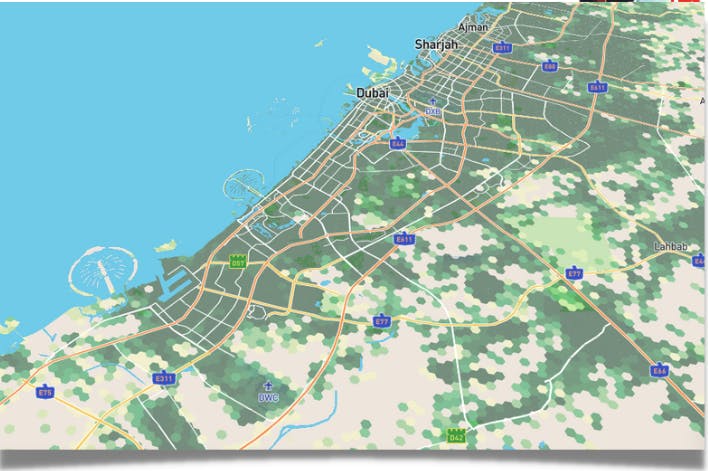The Ultimate Guide for Cloud Kitchen Success with Virtual Brands
Miss this guide, and your competitors could eat your lunch. Discover the data-driven strategies to ensure your virtual brand thrives in the crowded cloud kitchen space

Eshwaran Venkat
Co-Founder & CTO

Ready to launch a virtual food brand that doesn't just survive, but thrives? This isn't your average playbook. We're diving deep into the data-driven questions that separate the culinary titans from the fleeting trends. Uncover the secrets to transforming abstract ideas into actionable insights, fueling explosive growth, and aligning your team with a winning strategy.
Warning
Ignore this guide, and you might just be left wondering "what if?" while your competitors feast on the rewards.
What is a Cloud Kitchen?
Important
In the simplest terms, a cloud kitchen is a restaurant built for the digital age. It operates without a dine-in area, focusing exclusively on preparing food for delivery or takeout.
Customers interact with virtual brands / cloud kitchens through online platforms like food delivery apps or the cloud kitchen's own branded website and apps. This model allows cloud kitchens to prioritize efficiency, menu optimization and more which leads to profitability.
Key Advantages of Cloud Kitchens
- Reduced Overhead: By eliminating the costs associated with a physical dining space and front-of-house staff, cloud kitchens enjoy significantly lower overhead compared to traditional restaurants.
- House of Brands: A single cloud kitchen can operate multiple virtual restaurant brands, each with its own unique cuisine, branding, and target audience. This "house of brands" strategy maximizes kitchen space and resource utilization.
- Agile Brand Management: Cloud kitchens can quickly adapt to changing market trends. Underperforming brands can be easily replaced with new concepts, allowing for continuous optimization and experimentation.
- Ingredient Optimization: Sharing common ingredients (SKUs) across multiple brands minimizes waste and streamlines inventory management.
- Flexibility and Innovation: Cloud kitchens have the freedom to experiment with new cuisines, marketing strategies, and promotional offers without the constraints of a traditional restaurant setting.
- Strategic Location: Unlike traditional restaurants that rely on high-traffic locations, cloud kitchens can be strategically positioned in less expensive areas while still effectively serving their target market through delivery.
- Rapid Expansion: The flexibility of the cloud kitchen model allows for rapid expansion into new markets and territories.
While cloud kitchens offer incredible flexibility and efficiency, success hinges on creating brands that resonate with customers, while being as low-cost as possible. This requires a data-driven approach to understand market dynamics and consumer preferences.
Market Based Data-Driven Brand Building
- Target Audience: Define your ideal customer profile using demographics, preferences, and online behavior. What customers of a competitor can be encroached from the same sales territory? This will inform your brand's identity, menu, and marketing strategy.
- Menu Optimization: Analyze data on popular dishes within the neighbourhoods vs in the city and observe trends on cost to craft food and deliver them. You can only make a certain amount of dishes a day, so every one of them has to count. All of this and more is crucial to create a menu that is both appealing and profitable.
- Competitive Benchmarking: Analyze competitor performance on key metrics like similar locations and similar offerings. One way to always get one over the competitor is by quickly reacting to promotions and advertisements. Knowing when promotions or price changes occur is a great need in market observability.
Brand Positioning & Differentiation
- Unique Selling Proposition (USP): Define what makes your brand stand out from the competition. This could be unique cuisine, exceptional quality, or innovative packaging.
- Brand Storytelling: Craft a compelling brand story that resonates with your target audience and communicates your brand values.
Location Intelligence
- Hyperlocal Targeting: Understand the cuisine preferences, dietary needs, and purchasing power of your immediate delivery radius. You can also test information on whether certain food delivery apps have visibility in more neighbourhoods than others.
- Competitive Mapping: Identify gaps in the market, popular cuisines, and competitor pricing strategies in your area. This involves short-term changes as well as seasonal changes.
- Dynamic Pricing: Implement flexible pricing strategies using promotions. Restaurants can change their prices similar to airplane tickets, and promotions / discounts are the means to do so.
Internal Factors
Caution
Beware of Brand Cannibalization! This occurs when your own brands compete with each other, potentially hindering overall growth.
Your brand portfolio needs to be optimized so that on the big picture, you're generally better off. To avoid this, leverage data insights about the market to understand customer preferences and segment your brands effectively.
For example, if two brands both offer burgers, position one as a premium option with gourmet ingredients and the other as a value-driven choice with classic offerings. By carefully analyzing the market and making informed decisions, you can ensure your brands complement each other rather than compete.
Success is a Data-Driven Decision Away
Success isn't just about joining the virtual brand bandwagon. It's about crafting a brand that resonates, distinguishes itself, and delivers excellence. Avoid internal competition by carefully analyzing data and strategically positioning your brands to cater to diverse customer segments. With a data-driven approach and a focus on customer satisfaction, your cloud kitchen can thrive in the competitive food delivery landscape.
Download the Playbook Report Here
